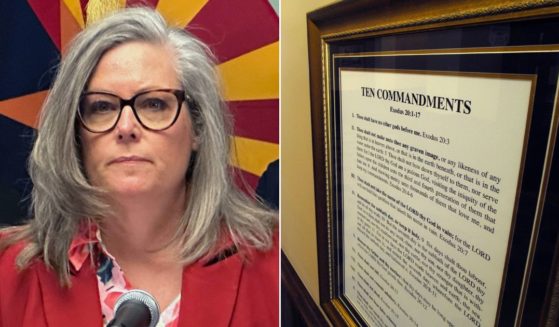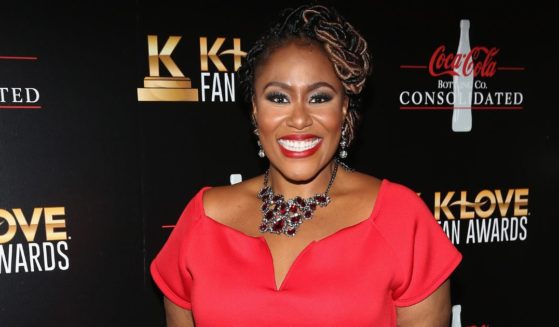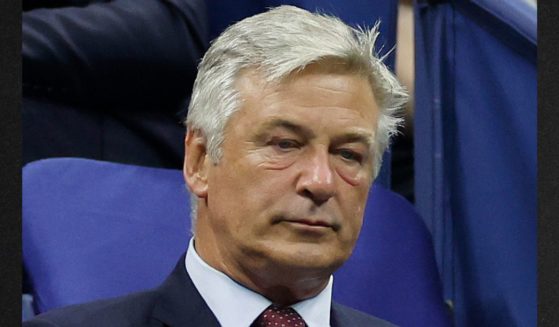NYT Covertly Edits Report on Capitol Officer's Death as Narrative Gets Busted
Something just isn’t right.
The incursion into the Capitol on Jan. 6 was an ugly incident, but one of the most gutwrenching stories to come out of it was the death of Capitol Police Officer Brian Sicknick.
Early reports stated the 42-year-old cop may have succumbed to injuries he received when a rioter bashed him in the head with a fire extinguisher.
House Speaker Nancy Pelosi even called former President Donald Trump an accessory to murder for supposedly inciting the riot that led to Sicknick’s death, and Washington, D.C., still remains a militarized zone several weeks later as part of the fallout.
Meanwhile, The New York Times has begun quietly walking back a key claim about the manner of the officer’s death — and that fact may have far-reaching implications.
Showing up as a short, italicized paragraph later tacked onto a Jan. 8 New York Times report was a bombshell revelation.
“New information has emerged regarding the death of the Capitol Police officer Brian Sicknick that questions the initial cause of his death provided by officials close to the Capitol Police,” the Times added to its story titled “Capitol Police Officer Dies From Injuries in Pro-Trump Rampage,” first published two days after the incident.
For more than a month, the paper of record and others in the establishment media had perpetuated the story of Sicknick’s brutal death, and yet a Washington Examiner investigation showed this correction was finally slipped into the online article sometime Friday.
Just before The Times finally got it right, journalist Glenn Greenwald tweeted about another in-depth New York Times story that exploited the now-debunked narrative to indict Trump.
“This big story published by the NYT about Sicknick’s death is simply false,” Greenwald tweeted Thursday.
“The headline itself may be false, but the key events it purports to describe never happened. This caused virtually the media to spend a full month repeating this as fact.”
This big story published by the NYT about Sicknick’s death is simply false. The headline itself may be false, but the key events it purports to describe never happened. This caused virtually the media to spend a full month repeating this as fact.https://t.co/sydme7fE8b pic.twitter.com/81sdSOkEy4
— Glenn Greenwald (@ggreenwald) February 11, 2021
Greenwald was correct, but so far, The Times and other establishment media outlets have not shown journalistic curiosity when it comes to pinpointing how such an error was circulated.
There were certainly several witnesses who would have been present and surveillance cameras, police body cameras and cellphone videos that probably existed — and yet none had officially surfaced to corroborate the violent account.
Only recently are outlets like Fox News beginning to question earlier reports and look for answers from the yet-to-be-released autopsy, although there are rumblings that his death may have been caused by exposure to a chemical irritant.
Fatal head trauma would be obvious to the naked eye — and certainly to a seasoned medical examiner — so questions remain about why those early reports stood so long unchallenged.
Furthermore, Sicknick’s family was urging the media not to use their loved one’s demise for political purposes early on.
Still, Sicknick was given a full hero’s funeral, complete with his casket on display for viewing at the Capitol and venerated by President Joe Biden and other top officials, followed by interment in Arlington National Cemetery.
Although it is refreshing to see law enforcement treated with such respect, this episode does raise questions of whether those in power knew the truth and decided to hold the officer out as a martyr slain by Trump’s minions anyway.
If the media and politicians close to the matter knew the truth but used Sicknick’s death as a tool against Trump, that would be almost too disgusting to imagine — but that doesn’t mean it isn’t a possibility.
Truth and Accuracy
We are committed to truth and accuracy in all of our journalism. Read our editorial standards.












